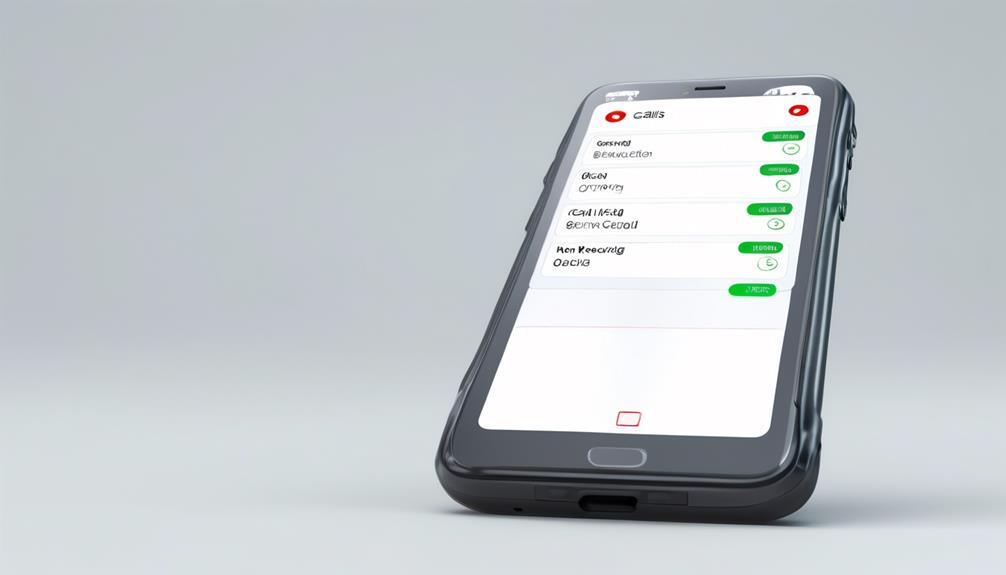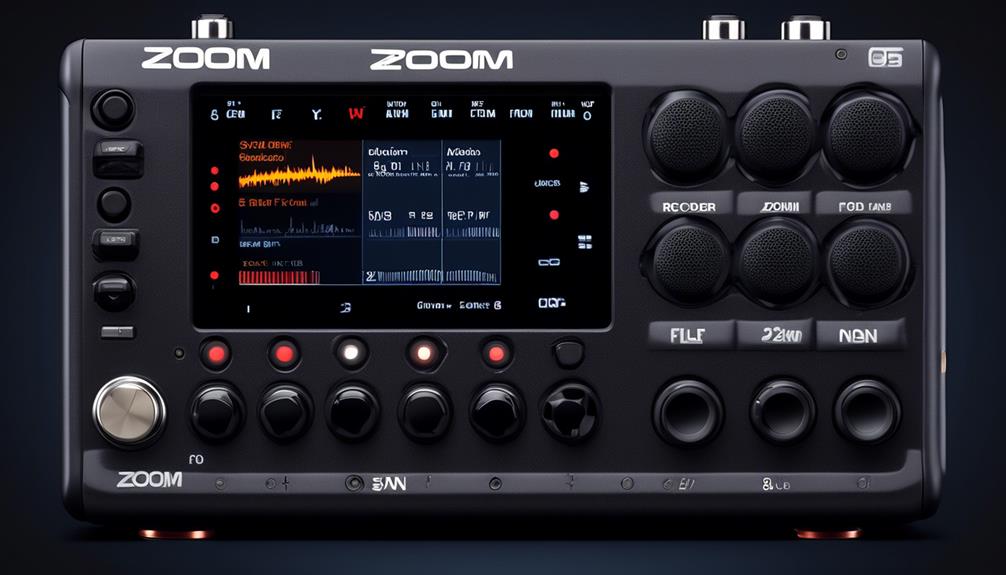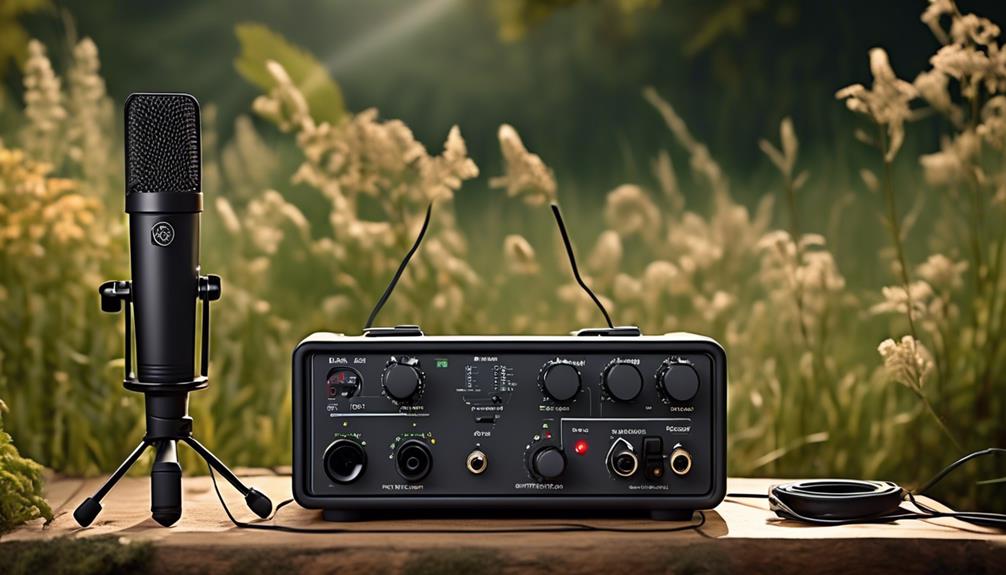Have you ever pondered the true capabilities of call recording? While many of us are acquainted with the concept, its full potential may be more impressive than you realize.
From ensuring quality assurance to providing valuable insights, call recording serves a multitude of purposes that go beyond just documenting conversations.
Whether it's for training and coaching or compliance purposes, the impact of call recording reaches far and wide.
But what exactly are these purposes, and how do they shape the way businesses operate?
Join us as we uncover the multifaceted role of call recording and its significance in various industries.
Key Takeaways
- Call recording ensures effective monitoring and assessment of customer interactions for quality assurance.
- Call recording helps in training and coaching employees by providing real-life examples and setting performance benchmarks.
- Call recording facilitates dispute resolution by capturing detailed information and providing concrete evidence.
- Call recording is essential for compliance purposes, ensuring adherence to industry regulations and mitigating legal risks.
Call Recording for Quality Assurance
Call recording for quality assurance ensures that customer interactions are effectively monitored and assessed for improvement. A robust call recording system is essential for maintaining high-quality customer service standards.
By capturing and storing conversations, businesses can review interactions to ensure compliance with company policies and industry regulations. Quality assurance teams can use call monitoring to identify areas for improvement, provide targeted training, and enhance overall customer satisfaction.
The call recording system allows supervisors to listen to calls and provide real-time feedback to agents, ensuring consistent service delivery. Additionally, it enables organizations to analyze trends, identify best practices, and address any performance gaps.
This proactive approach not only improves the customer experience but also helps in resolving disputes and mitigating compliance risks. Ultimately, call recording for quality assurance serves as a valuable tool for fostering continuous improvement and maintaining high standards of service excellence.
Call Recording for Training and Coaching

Moving from our focus on quality assurance, we now turn our attention to leveraging call recordings for training and coaching purposes within the call center environment.
Call recording for training and coaching is an invaluable tool for supervisors to monitor and evaluate employee performance during customer interactions. By using call recordings as training materials, new hires can learn from real-life customer interactions, accelerating their learning curve and ensuring consistent service quality.
Supervisors can also use call recordings to set performance benchmarks and provide targeted coaching and feedback to employees, leading to continuous improvement. Analyzing call recordings helps in identifying areas for improvement and enhancing overall call center training programs.
The insights gained from call recordings enable supervisors to tailor coaching sessions to address specific strengths and weaknesses, ultimately leading to a more skilled and confident workforce. Call recording for training and coaching is a proactive approach to employee development, ensuring that the call center team delivers exceptional customer experiences.
Call Recording for Dispute Resolution
Utilizing call recording for dispute resolution captures detailed information essential for preventing errors and misunderstandings in customer interactions. Recorded calls provide concrete evidence to resolve disputes between customers and clients, serving as a valuable tool in clarifying the details of interactions.
By leveraging call recording, companies can avoid lengthy and costly legal battles, as the recorded calls offer a clear record of the conversation, eliminating ambiguities. Managers can review the recordings to gain valuable insights and effectively resolve disputes, ultimately leading to improved customer service quality and enhanced agent training and performance.
Additionally, call recording facilitates the swift and accurate resolution of conflicts, ensuring that all parties involved have access to an accurate account of the interaction. Ultimately, the use of call recording for dispute resolution not only minimizes misunderstandings and errors but also fosters a transparent and trustworthy customer-client relationship.
Call Recording for Compliance Purposes

To ensure compliance with industry regulations and protect our business in disputes, call recording serves as an essential tool. Adhering to compliance regulations in call recording is crucial, especially in industries like finance, trading, healthcare, and insurance where legal adherence is paramount.
Recorded calls provide tangible evidence for audits, legal disputes, and regulatory compliance. By leveraging call recording, organizations can effectively mitigate legal risks, potential penalties, and ensure adherence to industry-specific laws.
Moreover, call recording not only assists in resolving disputes and preventing errors but also helps in upholding customer service quality, enhancing agent training and performance, and analyzing call data for valuable business insights.
Additionally, recorded calls offer a level of protection by capturing detailed information, preventing misunderstandings, and averting costly legal battles.
Call Recording for Customer Insights
After emphasizing the significance of call recording for compliance and dispute resolution, we now turn our focus to its role in extracting valuable customer insights. Call recording is a powerful tool for gaining a deeper understanding of customer behavior and preferences, as well as improving overall customer service. Here are some key ways call recording can provide valuable customer insights:
- Customer Service Evaluation: By reviewing recorded calls, businesses can assess the quality of customer service interactions, identify areas for improvement, and recognize exemplary customer service practices.
- Customer Feedback Analysis: Call recording allows for the analysis of customer feedback and sentiments, providing valuable information for refining products and services to better meet customer needs and expectations.
- Trend Identification: Through call recording analytics, businesses can identify recurring customer inquiries, complaints, or compliments, helping them to proactively address emerging trends and issues.
- Agent Performance Evaluation: Call recording enables the evaluation of agent performance, allowing for targeted coaching and training to enhance the overall customer experience.
Utilizing call recording for customer insights not only enhances customer satisfaction but also contributes to the continuous improvement of agent performance and overall customer service strategies.
Frequently Asked Questions
What Is the Purpose of Call Recording?
The purpose of call recording is to gain valuable insights and improve operations. Benefits include compliance with regulations, enhancing security and privacy, and facilitating training, evaluation, and analysis.
Call recording has various applications and advantages, such as ensuring legal compliance, resolving disputes, and providing evidence. It allows us to monitor performance, identify areas for improvement, and enhance customer service.
What Happens When You Record a Call?
When we record a call, it captures the conversation for various purposes, such as training, quality assurance, or compliance.
However, legal implications and privacy concerns must be carefully considered. It's crucial to notify all parties involved before recording, as failing to do so could lead to legal repercussions.
Understanding the laws and regulations surrounding call recording is essential to ensure compliance and protect privacy.
Why Do People Record Phone Conversations?
We record phone conversations for several reasons:
- To address privacy concerns and ensure that sensitive information is handled appropriately.
- To gather legal evidence in case of disputes.
- To make customer service improvements by monitoring and enhancing the quality of customer interactions.
Recording calls serves as a safeguard for businesses, protecting them legally and ensuring top-notch customer service.
Can I Know if Someone Is Recording My Call?
We need to be aware of privacy concerns, legal implications, and consent requirements when it comes to call recording.
It's important to know if someone is recording our call, as it can impact our rights and expectations of privacy.
Notifying participants before recording a call is both a legal requirement and an ethical practice.
Being aware of these factors helps protect individuals' privacy and ensures compliance with relevant laws and regulations.
Conclusion
In conclusion, call recording is a powerful tool that can benefit businesses in a variety of ways.
From ensuring quality service and compliance with regulations to resolving disputes and gaining valuable customer insights, it plays a crucial role in today's business environment.
Just like a silent observer, call recording quietly captures important moments that can make all the difference in delivering exceptional customer service and staying ahead of the competition.










